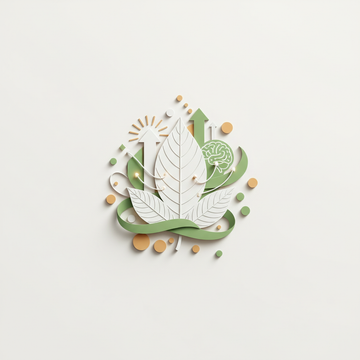Green vein kratom represents a fascinating middle ground in the botanical world, offering researchers a unique specimen that combines the energizing aspects of white strains with the calming properties of red varieties. As Canadian interest in kratom research continues to grow in 2025, understanding the distinctive characteristics of green kratom strains has become essential for botanical researchers, aromatherapy enthusiasts, and those conducting phytochemical studies. Green vein kratom is harvested at mid-maturity, resulting in a balanced alkaloid profile that blends the energizing properties of white strains with the calming effects of red strains, making it an ideal subject for comprehensive botanical examination.
Understanding Green Vein Kratom Properties and Origins
What Makes Green Vein Kratom Unique
Green kratom strains derive their distinctive properties from both their harvesting timing and processing methods. Unlike their red and white counterparts, green vein kratom leaves are collected when the plant reaches optimal maturity—not too young like white veins, nor fully mature like red varieties. This precise timing creates a unique alkaloid composition that researchers find particularly valuable for studying the spectrum of kratom's botanical properties.
The alkaloid profile sets green strains apart significantly. Green vein kratom contains moderate levels of mitragynine and 7-hydroxymitragynine, with additional minor alkaloids contributing to its versatile effects. This balanced chemical composition makes green strains excellent specimens for researchers examining how different alkaloid concentrations influence the plant's overall characteristics.
Processing methods further distinguish green kratom from other varieties. Green kratom leaves are typically dried indoors to preserve their bright color and alkaloid content, which differ from outdoor drying methods used for red strains. This controlled drying environment helps maintain the delicate balance of compounds that give green strains their unique properties, making them particularly valuable for consistency in research applications.
Traditional Harvesting and Processing Methods
The traditional methods used in Southeast Asia for processing green kratom have been refined over generations. Farmers carefully select leaves based on vein color and maturity indicators, ensuring each batch maintains the characteristic properties researchers expect from green strains. The indoor drying process typically takes several days, during which the leaves are carefully monitored to prevent over-drying or moisture retention.
Temperature and humidity control during processing directly impact the final alkaloid profile. Research facilities studying green kratom often find that specimens processed under consistent conditions provide more reliable results in their botanical examinations. This consistency makes green strains particularly valuable for Canadian researchers who require standardized specimens for comparative studies.
The geographic origin also plays a crucial role in green kratom characteristics. Different regions in Southeast Asia produce green strains with subtle variations in alkaloid content and aroma profiles, providing researchers with diverse specimens for comprehensive botanical analysis.
Popular Green Kratom Strains and Their Characteristics
Green Maeng Da - The Premium Choice
Green Maeng Da stands out among green kratom strains for its exceptional quality and consistent potency. Green Maeng Da is widely regarded for its high mitragynine concentration compared to other green strains, making it popular for researchers seeking consistent potency in their 2024 studies. This higher alkaloid concentration makes it an excellent choice for researchers conducting detailed phytochemical analysis.
The name "Maeng Da" translates to "pimp grade" in Thai, indicating the premium quality associated with this strain. For Canadian researchers, Green Maeng Da offers reliable potency levels that facilitate consistent experimental conditions. Its robust alkaloid profile makes it particularly suitable for researchers examining the upper ranges of green kratom's chemical spectrum.
Quality suppliers like 365 Kratom Canada ensure their Green Maeng Da specimens meet strict laboratory standards through comprehensive batch testing. This attention to quality control helps researchers obtain consistent results across different research sessions, making Green Maeng Da a preferred choice for ongoing botanical studies.
Green Borneo - Smooth and Balanced
Green Borneo represents the epitome of balance in green kratom strains. Green Borneo is favored for its smooth onset and gentle energy boost, ideal for new researchers and daytime studies. This makes it an excellent starting point for researchers new to green kratom examination or those conducting extended research sessions.
The Borneo region's unique climate and soil conditions contribute to this strain's distinctive characteristics. Researchers often note Green Borneo's consistent alkaloid distribution, which provides predictable results in laboratory settings. Its moderate potency levels make it suitable for detailed aromatic analysis without overwhelming the research environment.
For Canadian research facilities, Green Borneo offers an ideal introduction to green kratom properties. Its balanced nature allows researchers to study the full spectrum of green vein characteristics without the intensity sometimes associated with premium strains like Green Maeng Da.
Green Thai - Traditional Potency
Green Thai kratom carries centuries of traditional use in Southeast Asian communities. Green Thai is known for its traditional use in Southeast Asia to promote alertness and endurance, especially among manual laborers. This historical context provides valuable ethnobotanical research opportunities for Canadian scholars studying traditional plant uses.
The alkaloid profile of Green Thai typically shows higher concentrations of stimulating compounds compared to other green strains. This makes it particularly valuable for researchers studying the energizing aspects of green kratom varieties. Its traditional preparation methods have been preserved, providing authentic specimens for historical botanical research.
Research facilities examining Green Thai often focus on its cultural significance alongside its chemical properties. The strain's documented traditional uses offer researchers opportunities to correlate historical applications with modern phytochemical analysis, bridging traditional knowledge with contemporary botanical science.
Quality Standards and Lab Testing for Canadian Markets
Purity and Potency Testing Requirements
Canadian research standards for botanical specimens have evolved significantly in 2025. Canadian research-grade kratom should meet standards for microbial contaminants, heavy metals, and alkaloid content confirmation, ensuring specimens meet the highest quality requirements for scientific examination. These standards protect both researchers and maintain the integrity of botanical studies conducted across Canada.
Comprehensive testing protocols examine multiple safety parameters. Microbial testing screens for harmful bacteria, yeast, and mold that could compromise research integrity. Heavy metal analysis ensures specimens are free from environmental contaminants like lead, mercury, and cadmium. Alkaloid profiling confirms the presence and concentration of key compounds that define each strain's characteristics.
Laboratory certification has become increasingly important for Canadian research institutions. Many facilities now require suppliers to provide detailed certificates of analysis (COA) for each batch, ensuring traceability and quality consistency throughout their research programs.
Safety Standards for Botanical Products
Quality assurance extends beyond basic testing to encompass handling and storage protocols. Botanical products in Canada are recommended to have batch-level lab certificates to support authenticity and safety, providing researchers with detailed documentation for their specimen sourcing. This documentation proves essential for research publication and peer review processes.
Professional storage facilities maintain controlled environments that preserve alkaloid integrity throughout the supply chain. Temperature-controlled warehousing prevents degradation, while humidity control prevents mold growth that could compromise specimen quality. These measures ensure researchers receive specimens that accurately represent the strain's natural characteristics.
Chain of custody documentation has become standard practice for research-grade kratom suppliers. This documentation tracks specimens from harvest through processing to final delivery, providing researchers with complete transparency about their specimen's journey and handling.
365 Kratom Canada's Quality Assurance Process
365 Kratom Canada exemplifies the gold standard for research-grade kratom quality assurance in Canada. Every batch undergoes comprehensive laboratory testing for purity, potency, and safety parameters before reaching Canadian researchers. This rigorous testing protocol ensures that products like their Clarity and Sunrise blends meet the exacting standards required for botanical research.
The company's commitment to transparency includes providing detailed lab reports with each shipment, allowing researchers to verify alkaloid content and purity levels. Their proprietary testing protocols exceed industry standards, incorporating additional safety screenings that provide extra assurance for research applications.
Quality documentation accompanies every product, including batch codes, harvest dates, and processing information. This level of detail supports researchers in maintaining accurate records for their studies while ensuring consistent specimen quality across different research phases.
Research Applications and Botanical Examination Uses
Aromatic and Botanical Research Purposes
Green kratom strains offer exceptional value for aromatic research applications. The balanced alkaloid profile creates complex aromatic compounds that researchers use to study plant chemistry and fragrance development. Canadian research facilities often utilize green strains for phytochemical profiling, examining how different alkaloid combinations contribute to overall plant characteristics.
Botanical examination of green kratom provides insights into plant maturation processes. Researchers compare green specimens with red and white varieties to understand how harvesting timing affects alkaloid development. This comparative analysis contributes to broader botanical knowledge about plant chemistry evolution during maturation cycles.
Educational institutions across Canada incorporate green kratom specimens into their botanical curricula. Students examine leaf structure, alkaloid distribution patterns, and processing effects through hands-on laboratory exercises. These educational applications help train the next generation of botanical researchers while advancing scientific understanding of kratom varieties.
Proper Storage and Handling for Research
Maintaining specimen integrity requires careful attention to storage conditions. To preserve alkaloid integrity, store green kratom in opaque, airtight containers at 15–25°C, with humidity under 60%, ensuring specimens maintain their research value throughout extended study periods. Proper storage prevents alkaloid degradation that could compromise research results.
Light exposure particularly affects green kratom specimens, as their balanced alkaloid profile makes them more sensitive to photodegradation than red strains. Research facilities typically use amber glass containers or other opaque storage systems to protect specimens from UV exposure that could alter their chemical composition.
Humidity control prevents both mold growth and excessive drying that could concentrate alkaloids unnaturally. Climate-controlled storage facilities maintain consistent conditions that preserve the natural alkaloid balance researchers expect from quality green kratom specimens.
Documentation and Research Best Practices
Canadian research facilities maintain detailed records for all botanical specimens. Documentation includes batch codes, supplier information, testing results, and storage conditions. This comprehensive record-keeping supports research reproducibility and enables researchers to track specimen performance across different experimental conditions.
Sample preparation protocols ensure consistent results across research sessions. Standard procedures for weighing, handling, and examining specimens minimize variables that could affect research outcomes. Many facilities develop specific protocols for green kratom examination that account for its unique characteristics compared to other botanical specimens.
Research collaboration benefits from standardized documentation practices. Canadian institutions sharing green kratom research findings use common terminology and measurement standards that facilitate knowledge sharing and peer review processes.
FAQ
What makes green vein kratom different from red and white strains?
Green vein kratom is harvested at mid-maturity, creating a balanced alkaloid profile that combines characteristics of both white and red strains. The indoor drying process preserves its unique chemical composition, while red strains are dried outdoors and white strains come from younger leaves.
Which green kratom strain is best for beginners to botanical research?
Green Borneo is typically recommended for new researchers due to its smooth, balanced characteristics and moderate potency levels. Its consistent alkaloid profile provides predictable results, making it ideal for learning proper examination techniques and research protocols.
How should green kratom specimens be stored for research purposes?
Store green kratom in opaque, airtight containers at temperatures between 15-25°C with humidity levels below 60%. Avoid light exposure and temperature fluctuations that could degrade the alkaloid content and compromise research integrity.
What lab testing should Canadian researchers expect from quality suppliers?
Quality suppliers provide comprehensive testing for microbial contaminants, heavy metals, and alkaloid content confirmation. Each batch should include certificates of analysis documenting purity levels, potency measurements, and safety parameters required for research applications.
Are there specific regulations for kratom research in Canada?
While kratom regulations continue evolving, Canadian researchers should ensure specimens meet botanical research standards for purity and safety. Documentation requirements include batch certificates, supplier credentials, and proper storage protocols for research facility compliance.
How does Green Maeng Da compare to other green strains for research?
Green Maeng Da typically contains higher mitragynine concentrations compared to other green strains, making it valuable for researchers studying potent alkaloid profiles. Its consistent quality and well-documented characteristics make it a reliable choice for comparative botanical studies.
What aromatic properties make green kratom valuable for research?
Green kratom's balanced alkaloid profile creates complex aromatic compounds that researchers study for phytochemical analysis. The combination of energizing and calming alkaloids produces unique fragrance characteristics that contribute to botanical research on plant chemistry and aromatic compound development.
Advancing Green Kratom Research in Canada
Green kratom strains offer Canadian researchers an exceptional opportunity to study balanced botanical specimens with well-documented characteristics and reliable quality standards. The unique properties of green vein varieties—from the premium potency of Green Maeng Da to the gentle balance of Green Borneo—provide diverse options for comprehensive botanical examination. As research standards continue evolving in 2025, quality suppliers like 365 Kratom Canada ensure researchers access specimens that meet the highest purity and documentation requirements.
The future of green kratom research in Canada looks promising, with increased emphasis on quality assurance, proper documentation, and standardized examination protocols. Whether conducting aromatic studies, phytochemical analysis, or comparative botanical research, green kratom strains provide the consistency and quality that serious researchers demand. For those ready to begin their botanical examination journey, exploring 365 Kratom Canada's collection of premium green strain options offers an excellent starting point for quality-focused research applications.





